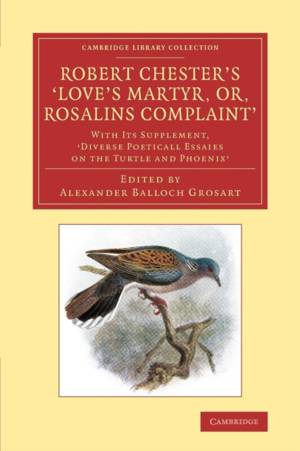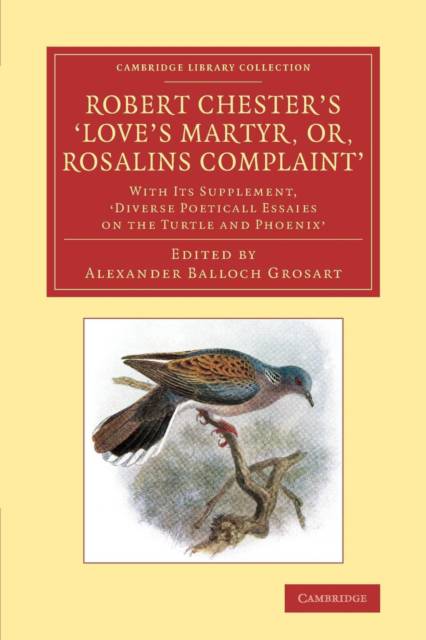
Je cadeautjes zeker op tijd in huis hebben voor de feestdagen? Kom langs in onze winkels en vind het perfecte geschenk!
- Afhalen na 1 uur in een winkel met voorraad
- Gratis thuislevering in België vanaf € 30
- Ruim aanbod met 7 miljoen producten
Je cadeautjes zeker op tijd in huis hebben voor de feestdagen? Kom langs in onze winkels en vind het perfecte geschenk!
- Afhalen na 1 uur in een winkel met voorraad
- Gratis thuislevering in België vanaf € 30
- Ruim aanbod met 7 miljoen producten
Zoeken
Robert Chester's Love's Martyr; Or, Rosalins Complaint'
With Its Supplement, Diverse Poeticall Essaies on the Turtle and Phoenix'
Robert Chester
€ 83,95
+ 167 punten
Omschrijving
The literary scholar Alexander Balloch Grosart (1827-99) reprinted this allegorical poem by Robert Chester (fl.c.1586-1604) with an introduction and notes in 1878. Grosart incorrectly identified the poem's author as a certain Sir Robert Chester of Royston. Later research suggests Chester served as a chaplain or secretary in the household of the work's dedicatee, Sir John Salusbury. Originally printed in 1601, the grandiloquent, meandering poem is chiefly remembered for the works appended to it. These include original poems by Chester's contemporaries, Shakespeare, Jonson, Chapman and Marston, as well as the anonymous 'Ignoto' and 'Vatum Chorus'. All the poems treat Chester's theme, an invented myth describing the chaste, sacrificial love between a phoenix and a turtledove. Scholars continue to debate the identity of the historical figures signified by these birds, especially in Shakespeare's cryptic contribution.
Specificaties
Betrokkenen
- Auteur(s):
- Uitgeverij:
Inhoud
- Aantal bladzijden:
- 358
- Taal:
- Engels
- Reeks:
Eigenschappen
- Productcode (EAN):
- 9781108067959
- Verschijningsdatum:
- 31/07/2014
- Uitvoering:
- Paperback
- Formaat:
- Trade paperback (VS)
- Afmetingen:
- 152 mm x 229 mm
- Gewicht:
- 526 g

Alleen bij Standaard Boekhandel
+ 167 punten op je klantenkaart van Standaard Boekhandel
Beoordelingen
We publiceren alleen reviews die voldoen aan de voorwaarden voor reviews. Bekijk onze voorwaarden voor reviews.









